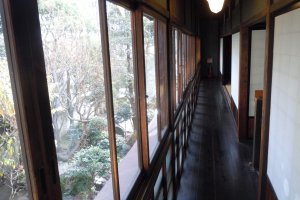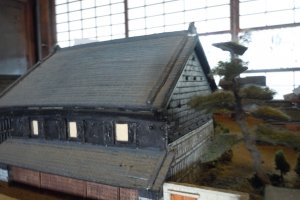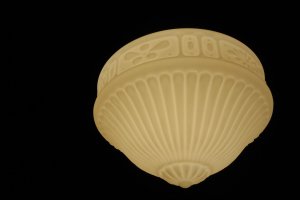Passing by Utsunomiya Station? Perhaps you are a resident of Utsunomiya, entrenched in your everyday habits. It’s worth checking out the old Shinohara house, about a three minutes' walk from the west exit of the station.
Outside, traffic and people flow by, and the sky is bright. Inside, you find yourself standing in dimness, on tatami, surrounded by dark wood. Time stills. The walls seem supernaturally thick, like you have entered a fortress.
The house is unfurnished and unadorned apart from a couple display cases, some information placards in Jpaanese, a 1/100 scale model of the property as it stood just prior to the 1945 bombing, and a model of Utsunomiya Castle. It costs just Y100 to enter. Perhaps pack origami paper, a yoga mat, a cushion or good book. I wonder if anybody ever has just entered to spend time there, apart from the volunteers? Especially on a weekday, you may be alone, besides the volunteer at the reception desk.
Explore. I appreciate something different every time I go. When I entered last time, I came upon a local nature photography exhibition in the big room on the second floor. Last summer, my student’s garment making club displayed their creations throughout the house.
Accept the tape recorder with an English guided 20-30 minute tour (I kept pausing it) to appreciate the details, and what this building and property are all about.
The Shinohara’s were fertilizer and miso merchants, and landowners, one of the wealthiest families in the area. The family income at one point, according to the narration on the tape recorder, was equivalent to 8,000 people’s combined salaries.The Shinohara house was constructed with the highest quality materials, no doubt by top craftsmen, more than a century ago. No expense was spared.
The house has survived yearly typhoons and lightening storms, countless earthquakes, and most significantly, World War II bombing and the resulting fires; other buildings on the property were lost. The house was moved seven meters to make way for a road in 1967, then donated to the city in 1995 and, following restorations, open to the public the following year. It has survived and stood witness to the development and modernization of the city. In Boston, London, Athens or Istanbul, the age of the Shinohara Residence would be inconsequential and, in comparison to the age of most shrines and temples in Japan too. Few private residences, however, in this country and especially in this city, pre-date World War II.
I like the rippled old glass, and the long windowed corridor on the second floor, the drawers with lion’s head knobs under the stairs, the unique light fixtures, the black plaster, the heavy shutters, the central pillar, lattice work at the entrance, and family crest on the peak of the roof. I don’t love bumping my head as I climb up the steep stairs. Beware of that if you are tall.
I look forward to seeing the Shinohara Family’s hina dolls collection displayed at the house in late February (prior to Girls’ Day 03/03) and to sitting on the back porch again, perhaps on a hot summer’s day, pretending, if just for a few moments when time stands still, that the property is all mine.


































